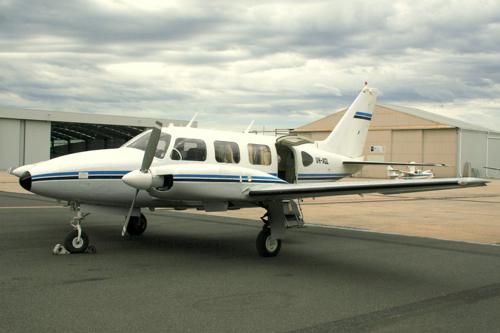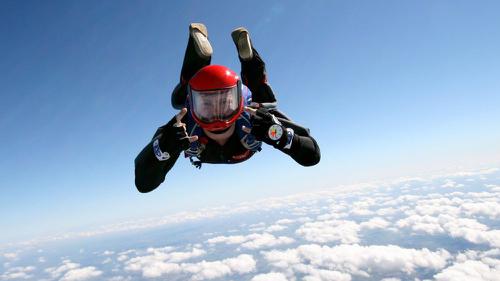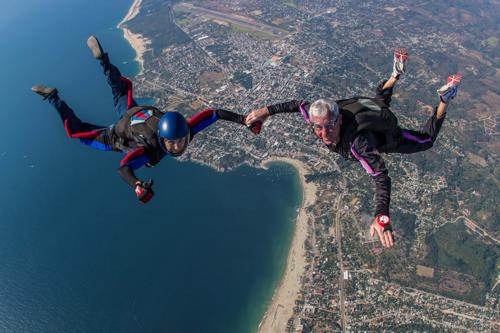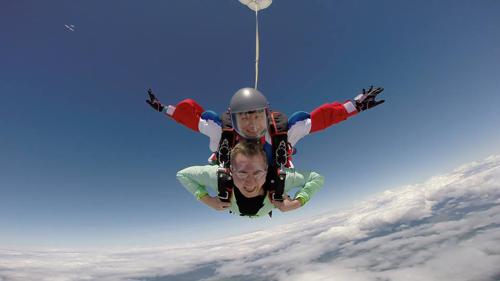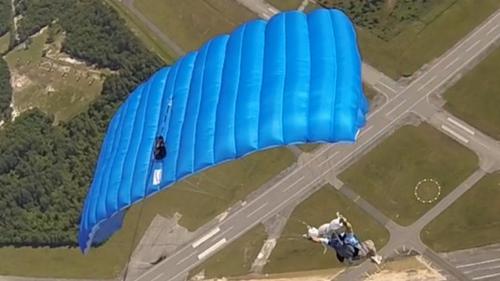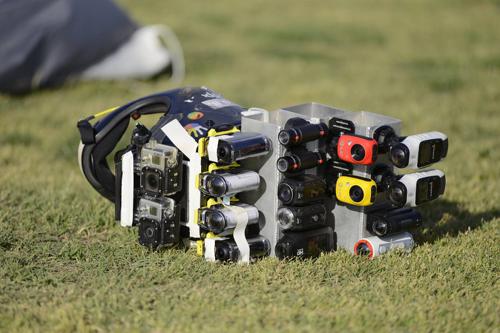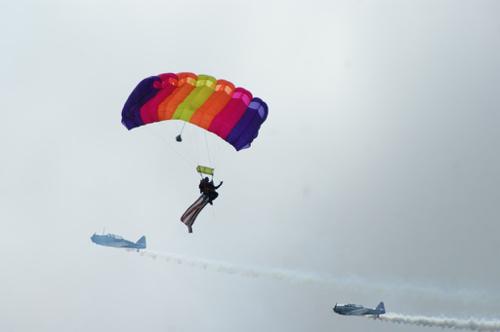Action cameras aren’t merely changing the production world, they have become a staple of the production world. Getting the inside shot is simple with POV cameras and the number of choices in this niche world is broad and perhaps daunting. Action cameras are inexpensive and provide a simple means of additional camera angles to any production.
In this review, I’m going to tackle all of the “name-brand” cameras available out there. This article will not provide the answer to “which camera should I buy?” The range of criteria is so broad that the question is beyond the scope of a single review. This review will provide information about which action-camera is best suited for specific criteria and provide information that may help you make informed purchasing decisions.
I’ve gathered what I believe to be the most viable options for most “extreme” sport enthusiasts for shooting broadcast-quality video. During this review, each camera is set to 1920x1080, 30fps (except where otherwise noted).
The criteria for inclusion:
Price point (150.00-400.00 USD)
Bit-rate (16Mbps or higher)
Codec (must be non-proprietary)
The selectees:
GoPro 3+ ($399.00)
GoPro 3 Black ($349.00)
Sony AS100 ($299.00)
Sony AS30 ($299.00)
JVC Adixxion ($299.00)
Midland XTC400 ($249.00)
Polaroid XS100 ($169.00)
ReplayXD Mini ($199.00)
Liquid Ego ($179.00)
Drift Ghost S ($399.00)
Scoring Procedure
With the criteria determined, particpants selected, I created a scoring sheet that could be used as a reference throughout the process. The goal is to be as objective as possible in a subjective conversation.
A panel was selected, four people who would review images from the cameras and choose the best image when image quality was relevant. Other factors such as battery life, wireless functionality/reliability, audio features/quality are objective. Scores are based on how these functions are implemented and may be relied upon.
For this shootout I mounted 17 action cameras on a single helmet, then took it skydiving, snorkeling, zip-lining, bob-sleighing and motorcycling to enable accurate side-by-side comparisons of each camera.
For example in the battery life test, the Liquid Ego went for nearly 5 hours of record time, blowing through a few cards, while the Garmin VIRB and GoPro 3 Black barely reached 50 minutes of record time. The Liquid Ego nets a score of “5” while the Garmin VIRB and GoPro 3+Black earn a score of 2. The Sony AS series weighed in at just over 2.75 hours earning a score of “4”. Had it not been for the curve-altering record times of the Liquid Ego, the Midland and Polaroid cameras, Sony’s AS100 would have won this category. Regardless, with a linear scoring value of 0-5, the weighting may seem unbalanced from time to time. Please note that the score card contains two scores; one based exclusively on image quality, and the other score relevant to the overall product experience.
Most of the cameras have tweaks and settings that allow them to be the best they can for specific situations. Rather than setting each camera to its best settings, all cameras were used exactly as they come out of the box. In other words, once the box was opened the battery was charged, a card inserted into the camera and formatted, it was put to the test.
Sony, GoPro, and ReplayXD all have internal tweaks accessible via either proprietary software or .txt files. Each allow for an optimized image even though I’ve avoided using any of these optimizations.
After all the results were in and the panel gave their feedback, here's what the final result looked like. I sorted the score sheet below by total score but you can click on any header to sort the table by that column and see how the different cameras compared in any specific test. I discuss each test area in detail below.
Score Sheet
Image Quality
Winner in Image Quality - Sony AS100V
The subject of image quality is subjective. The four panelists had to choose from a variety of videos (a few of which are linked in this article). Factors involved in the comparison are dynamic range (darkest to the brightest representation of image content), saturation, color accuracy, codec compression/banding/pixelation, motion management, and frame to frame blurring.
Watch the Wingsuit Exit Video
For example, in the image above, the center top allows for the lake in the background to be seen, while also allowing for the darker interior and tires of the aircraft to hold details. There are no blowouts of the highlights, and the reds, greys, whites, and orange colors are all accurate to original. Watch the YouTube-linked video at the 4K resolution on YouTube for the best experience and ability to determine which image you find best. Each camera is displayed at approximately 720p.
You’ll likely want to turn off your audio as there is no usable audio content.
Watch the Zipline Video
Watch the Bobsled Video
In the above test, one of the cameras failed due to (I believe) card error. The high motion, high contrast, light and dark areas for exposure testing provides for a terrific challenge. Even in the still framegrabs, the torture is evident in blur, color, and compression artifacting.
Watch Wingsuit Overhead Video
The complexity of the ground coupled with the high motion makes for a good test of contrasts and detail management in moving platforms. Note that the majority of the cameas are set to an FOV of 120 degrees, as that’s how they come out of the box. A couple cameras are 170 degrees.
All panelists unanimously chose this action camera over all others in all resolutions and framerates. The GoPro 3+ came in second. The Sony AS30 takes third prize, and an honorable mention goes to the Drift Ghost S. In well-lit situations, the Midland and Garmin VIRB cameras really surprised me too, but at 35Mbps (this camera also does 50Mbps in XAVC-S mode, not used in this shootout), the Sony AS100 sweeps the image quality score.
Battery Life
Winner in Battery Life - Liquid Ego
This was a stunner. I left all the cameras running/recording and went to dinner. Battery life would be lessened by movement, but the bigger point was how long the cameras could record. In most cases, the camera battery died prior to the card being filled (I used 16 GB cards for this test). The Liquid Ego kept running and running, filling a 16 and then 8 GB card before finally dying at just under 5 hours in 1080 mode. Wifi was disabled (all wifi was disabled for most tests).
This is one of the least expensive cameras in the shootout; it has some shortcomings, yet one major bonus is that this camera, removed from its own mounting clip, can be fitted to GoPro mounting systems. Brilliant move on the part of Liquid!
What I didn’t like about this camera are the number of button presses to record in 720-30p or 60p without wireless enabled. However, shooting in 1080 mode is as simple as turning it on and hitting record.
When in the waterproof case, it’s impossible to see the LCD display. For budget users, this is an easy camera to like.
Profile
Winner of the Action Camera Profile Category - ReplayXD Mini 1080
At slightly larger diameter than a nickel this camera is rock-solid, doesn’t need stabilization, and blew my mind when I found I could drive a car over it. So small to present less of a snag hazard for skydivers, this tiny marvel is also perfect for UAV/Drones, hiding on cars (ReplayXD is the camera most used in professional auto-racing) and so small it can even be placed upright under a skateboard. It’s tiny and weighs virtually nothing. The camera also offers a threaded head so that lens adapters may be used for either lenses or filters for better image. This is tremendously valuable for outside photography, where an ND filter will immediately remove the heavy contrast and juddered playback, while reducing jello-cam (rolling shutter) issues. JVC, Polaroid, and Garmin all have the ability to come in fairly high in this conversation except their mounting systems are not only flimsy, they’re high profile and a snag hazard. Using these cameras without their manufacturer-issued mounts will provide a very low platform and a much more stable image.
Testing Locations
The waters of Ocho Rios Jamaica, Mystic Mountain for snorkeling, bobsled, and zipline testing
Lake Elsinore California for skydive tests
Virgin River Gorge for road/motorcycle testing
Toronto, Ontario for slow motion and other comparisons
Although durability wasn’t a measured factor in this shootout, ReplayXD would easily win the durability category (comparing cameras out of their waterproof box). There simply isn’t a tougher camera on the market. Other features I like; the camera offers up timecode for professionals, external audio inputs and user-controllable image quality (Saturation, Exposure, Audio Gain, Sharpness, etc).
Wifi
Winner of the Wifi Category - Sony AS100 and Liquid Ego
This was a tougher call. Other than the Replay Mini, all of the POV cameras offer wifi control or connectivity to a mobile device. I tested the systems on a Samsung GalaxyIII cell and Samsung Galaxy Tab2 tablet. All devices connected successfully. All devices allow for some level of “streaming preview.” Some devices such as the JVC Adixxion allow for streaming directly to UStream if the user has an account and is fortunate enough to be very close to a WAP. Streaming for preview is a serious drain on battery life, rarely works in a moving environment, and is overall somewhat useless beyond setting up a camera angle or adjusting settings (in this writer’s view). Sony’s Play Memories application was difficult to use on their early AS15 models but on the AS100 they’ve gotten it right. It’s install and done. The same can be said for the Liquid Ego. JVC’s Adixxion was a bit of a struggle but it did work once all the paths were traveled properly.
The same can be said for the Garmin VIRB, the Polaroid X, and the Midland XTC. GoPro was also reasonably easy to set up so saying that the Sony and Liquid win this category is essentially a small thing. In the end, these two were simply easier/faster to set up than the others by a small margin of time and/or frustration. It should be mentioned that the JVC Adixxion was the most difficult to set up. They use a broader-scope application called WiVideo, designed to work with a host of action cameras.
Wet Use
Winner of the Wet Use Category - Three Way Tie Between GoPro3+, Sony AS100 and Drift Ghost S
What made the difference in this category is “how deep can they go and how easy are they to operate under water?” I did not take the action cameras to their rated depths and I am relying on the manufacturers for accurate information on how deep these POV cameras can go. With that said the Replay Mini, Garmin VIRB, Ghost S, Polaroid XS, do not require water housings.
Watch Underwater Video
After spending 3 hours in the water with the action cameras, water was no issue for any of the cameras. GoPro and Sony both include the waterproof housing in the purchase price. Garmin, Midland, Liquid, and even ReplayXD (for depths greater than 12’) all require the purchase of a waterproof housing for wet use. For underwater image quality, Sony AS100 and Drift Ghost S provide the most accurate image, yet the GoPro has a slightly smoother color saturation that is pleasing to the eye. For reasons I could not figure out, the Sony AS30 fogged in the lens. This didn’t happen with the AS100 and more curious, it didn’t happen with the hand-held AS15 I was using to document the event. The fogging didn’t affect the image much, but it was there. What I liked most about the AS100 is that the LCD panel is large and it was easy to see what was going on with the camera while under water.
Audio
Winner of the Audio Category - Sony AS100
With external microphone-in that requires no adapters, AGC, and high-end audio converters, this camera offers wonderful compressed audio, equal to the audio recording capability of significantly more expensive cameras. The Sony AS30 also offers external audio inputs, but is a bit less flexible, as the audio input is hidden under the connection cover.
ReplayXD also offers external microphone input as does the GoPro 3+ but both require larger, more bulky adapters that cost more dollars. ReplayXD offers a user-controlled gain function which is a real benefit to professionals needing nat audio from locations and in loud environments (such as auto races or helicopter skins). However, the Sony AS100 offers not only the external microphone input on the bottom of the action camera (obviously cannot be used in the water housing), but a higher grade of DAC (Digital Audio Converter) than its categorical counterparts.
Ease of Use
Winner of the Ease of Use Category - No Clear Winner
Most of the cameras offer a one-button on/record feature. Out of the box the Sony series, Polaroid, Midland, Garmin, and ReplayXD cameras offer a one-button record feature. GoPro offers one button record as a menu feature, and the Drift can be programmed to loop and record when turned on for ease of use. However, out of the box there are several that are easy to use as point and press action camcorders and so there is no clear winner.
If menus are the measure then the Drift Ghost S, the Garmin VIRB, and the JVC Adixxion win for graphic interface. Sony AS series win for clear instruction and ease of navigation. The GoPro wins for sheer depth of options. I’m not a fan of some of the GoPro surface options that make the menus long and kludgy to navigate. Curiously enough, ReplayXD has no menu; all controls are done in a .txt file set on a phone, tablet, or computer. However, their menu options go deeper and are more relevant to picture quality than any other POV camera available.
Mounts
Winner of the Mounts Category - Replay XD Mini
Although the (likely obvious) winner for mounts would be GoPro, it actually isn’t. On sheer numbers of achievable angles and mounting systems, REPLAYXD Mini takes the prize with GoPro following a close second. There is a reason there are so many mounting kit options for some of the cameras out there; their factory mounts are terrible.
Many of the parts and pieces available for various POV cameras are designed to compensate for the initial weaknesses of the mounting system. Mounting systems matter far more than most users of action cams realize. If the mount is not 100% solid then the image will be unstable and aside from needing stabilization in post (which affects image quality), the image will likely incur ‘jello-cam’ also known as “rolling shutter,” which cannot be repaired.
In this video, both are out-of-the-box mounting systems. Note the difference in stability. A rock solid mount needs no stabilization work in post. Choosing the right mount system is important. A weak mount will be buffeted by the wind, bounced around by roads, surf, or the turbulence that affects a UAV camera platform.
Internal stabilization is a tremendous benefit if it is done well. The Sony AS100 has a tremendous stabilization system (Sony has long been famous for their BOSS camera stabilization) matched by no other low-cost camera whether a POV/Action camera or a larger palm-corder category camera.
This stabilization system makes the AS100 superior for use on a UAV platform, as it is not susceptible to jello cam, is very light weight, and allows for long battery life. Matched with a two or three-point gimbal flawless smooth video is possible for very little cost on a drone system.
JVC and Garmin VIRB ELITE offer stabilization, but at a tremendous cost of resolution and color saturation.
Slow-Motion/Overcrank
Winner of the Slow-Motion/Overcrank Category - Sony AS100
It’s no surprise that the newer Sony AS100 wins in this category. Only Sony and GoPro offer high framerates of 120 or 240 frames per second, so only the Sony AS100 and the GoPro 3+ were tested for these features. Most every action sport benefits from slow motion, so with the ability of the Sony AS100 to sync up to five cameras with one button push, it makes for a wonderful mix of slow motion and normal motion possibilities.
GoPro 3+ shoots 240fps with a resolution of 720 x 480 pixels and Sony shoots at 800x480 pixels. The Sony has been cropped to match the GoPro3+. Both cameras would benefit in their “pro modes” where GoPro offers up to 35Mbps and Sony AS100 offers 50Mbps in the semi-professional XAVC-S mode. However, since these tests are entirely “out of the box,” it was not appropriate to compare the slow motion at anything but the stock settings.
Low Light
Winner of the Low Light Category - Tie Between Sony AS100V and GoPro3+
This is a challenging category for most of these cameras. All of them have very small imagers and lenses that shoot at a very high resolution. Packing so many pixels onto very small surfaces means very little light can get into the individual pixel sensors and therefore, noise is usually part and parcel of for each of these POV cameras.
GoPro offers the smoother color representation with slightly more noise. Sony is brighter with less noise, but a blue cast is apparent in both Sony cameras. The additional information in the 50Mbps file allows for a cleaner color correction, yet the smoother color in the GoPro 3+ means less need for color correction. Pushing the color in the GoPro3+ at 35Mbps brings up the noise pretty quickly, so if matching cameras is part of the workflow, beware that matching higher grade formats might be difficult. It’s a choice between removing blueish casting or a fair amount of noise reduction processing in the professional environment. On a personal note, I’d prefer to remove/reduce the blue cast.
Watch the Low Light
The table cloth in this image is purple, not black. The GoPro3+ (lower right) is smoother in its dynamic range but less accurate than the Sony AS100V (upper left). The GoPro Black at 16Mbps is quite noisy, while the Sony AS30 is clean, but also displaying a blueish cast.
Extra Features
Winner of the Extra Featured Category - Garmin Virb
This category is easily earned by the GARMIN VIRB. With a cyclometer, heart rate monitor, GPS, ANT+™ wireless control (a wide range of remote and input possibilities), accelerometer, barometer, and a “skiing” mode that is a huge benefit to action sports enthusiasts, this camera is packed with features. In Skiiing mode, the camera knows when you’re engaged in your activity or not. It will stop recording when you’ve landed, stopped moving, etc. Unfortunately for skydivers, the camera senses aircraft movement as “sporting movement so in this mode, it will record the climb to altitude. For mountain-cyclists, this is a great feature. However, it’s also a battery-eater. Sony AS100 and GoPro 3+ also offer a plethora of features that advanced users will appreciate, such as higher framerates, controllable scenes, FOV adjustments, 24p, and other video-related features. Both Sony AS100 and ReplayXD Mini offer Timecode for multiple camera sync, logging, or reference video.
Professional Codecs/Bitrates
Winner of the Professional Codecs/Bitrates Category - Sony AS100V
Both Sony AS100V and the GoPro 3+(Black) offer users higher bitrates and professional codecs for critical functions that will benefit the editing process during post production. Only these two cameras offer these features and although the unique features go beyond the scope of this review, I feel it’s worth of demonstrating what the differences look like. Not all video editing systems can manage these codecs. Professional video software has the necessary decoders yet even casual users can find free decoders on the GoPro and Sony websites. Apple FinalCut has issues with both the XAVC and Cineform codecs without downloading the decoder but again, every pro-level application can decode/read files generated by these cameras.
Why would one want a higher bitrate, more robust codec? If color correction or compositing are to be employed to process the footage captured by these action cameras, it’s a good idea to have as much information in the file as possible. A higher bitrate provides more “bits” that the NLE can push around, and still retain quality.
Watch the Codec Test Video
This image is raw, no processes added. Keep in mind that when shooting high bitrates the camera is shooting flat, no internal color processing. In the upper right is a GoPro Black shooting standard bitrate. In the lower left, I’ve set the Sony AS 30 to “Neutral” so that there is no color processing. Pay attention to detail rather than color range. This is an overcast day, so there is no blue in the sky. In the next image, I’ll oversaturate and over luminate the image to better demonstrate how far the footage can be processed without falling apart.
Here, an HSL filter has been applied. Note that the Sony AS100V in the upper left, and the GoPro 3+ in the lower right, best hold together. As subjective as this conversation is, most would agree that the AS100V at 50Mbps holds together better than its counterparts, although the GoPro 3+ at 35Mbps is very impressive. This is a very important consideration for professional users.
To access high bitrates with the Sony AS100V action camera, a 64GB SDXC card is required. Smaller cards use the FAT format while the larger 64GB card uses EXFAT. EXFAT is necessary to access the PRO mode in the AS100V. The manual does not clearly state this, so beware. It actually took two calls to Sony technical support to realize this. Their own technical support team didn’t know the answer, probably due to the newness of the camera model.
See the 4K video for more content and comparison.
In Summary
All in all, each of the action camera/POV camera products tested in this shootout did very, very, well and far exceeded the quality of cameras only one generation past. This shootout truly came down to a select few cameras though, and any one of the top five are excellent choices depending on requirements for form factor, image quality, post-production requirements, and high framerates.
Not unexpectedly, the scoring fell very close to the price points of the cameras. Only the ReplayXD Mini was the surprise. Ultimately, it came down to a few things, all of them feature-related as opposed to picture quality related. Truly, there are so many offerings overall, it’s impossible to suggest that any one camera is significantly better than the others for overall use. My personal preferences come down to the Sony AS100V, it’s been called the “GoPro-killer” by many reviewers, but there is a reason everyone compares themselves to GoPro cameras; GoPro is a damn fine product. I don’t care for the GoPro manufacturer mounts, and mount stability is a very large factor in action sports, motor sports, and high-impact situations. The Garmin VIRB took me by surprise; the camera is the heaviest of the lot and has a terrible mount. It would be a terrific camera for most users if the mount was as stable as the camera itself. It truly feels like manufacturers pay almost no attention to the stability of the mounting system, and it’s for this reason that I didn’t use most of the manufacturer mounts (I was doing them a favor while also watching out for my own safety).
Mounts aside, battery life aside, the VIRB is an exciting newcomer to the mix of cameras. Midland’s new XTC 400 really threw me for a loop, as the camera feels/looks cheap. Again, they have a horrid mount that is even more flimsy than GoPro’s mount. Yet the picture quality, price point, and ease of use make the Midland a wonderful choice for the budget-conscious sport shooter. Finally, Liquid’s EGO really is a delight. Yeah, it’s a pain in the ass to use when in the water housing, and it has a mount identical to GoPro, but it looks like a Minion. How can one just simply not LOVE a Minion? The record time makes this an all-day camera and given that it shares mount points with GoPro, a whole world of mounts are available for this fun little camera at the lowest price point in the mix (it barely made the review criteria).
Final Standings:
Sony AS100
74
GoPro Hero 3+
60
ReplayXD Mini 1080
58
Sony AS30
53
Garmin VIRB
52.5
GoPro 3 Black
51
Drift Ghost S
49
JVC Adixxion
45
Midland XTC400
41
Liquid Ego
34
Polaroid XS100
34
All The Test Videos:
Motocycle / Road
Motocycle / Road
Underwater Snorkel
Underwater Snorkel II
Underwater Snorkel III
Wingsuit Overhead
Wingsuit Exit
Zipline
Zipline II
Bobsled
Slow Motion
Codec Test
Low Light
This Week in Photo
1st Runner Up
GoPro Hero 3+
$399.99
More Information
Winner
Sony AS100
$299.99
More Information
2nd Runner Up
Replay XD Mini
$199.99
More Information
New Action Camera Releases
- Sony HDR-AZ1VR (Release Date: October 2014)
- GoPro Hero 4 (Release Date: October 2014)
About The Author
Douglas Spotted Eagle (D29060) is a videographer/producer living between the world of professional production and skydiving. With more than 5000 skydives and 300 film/television productions, he loves playing with cameras and things that go fast. He is the managing producer and instructional designer at VASST, who will be releasing “ActionCam ClipFix,” an NLE plugin product designed for POV camera shooters. Thanks to Max at Mystic Mountain, John/Karl/Steve/Kenn/Ziggy at Skydive Elsinore, Pepper at Jamaica Snorkel, the Arizona Highway Patrol, Dropzone.com, Adam, Roger, and Nashie who helped make this review happen as smoothly has herding lenses can be. No animals alive or simulated were harmed in the production of this shootout/review.

